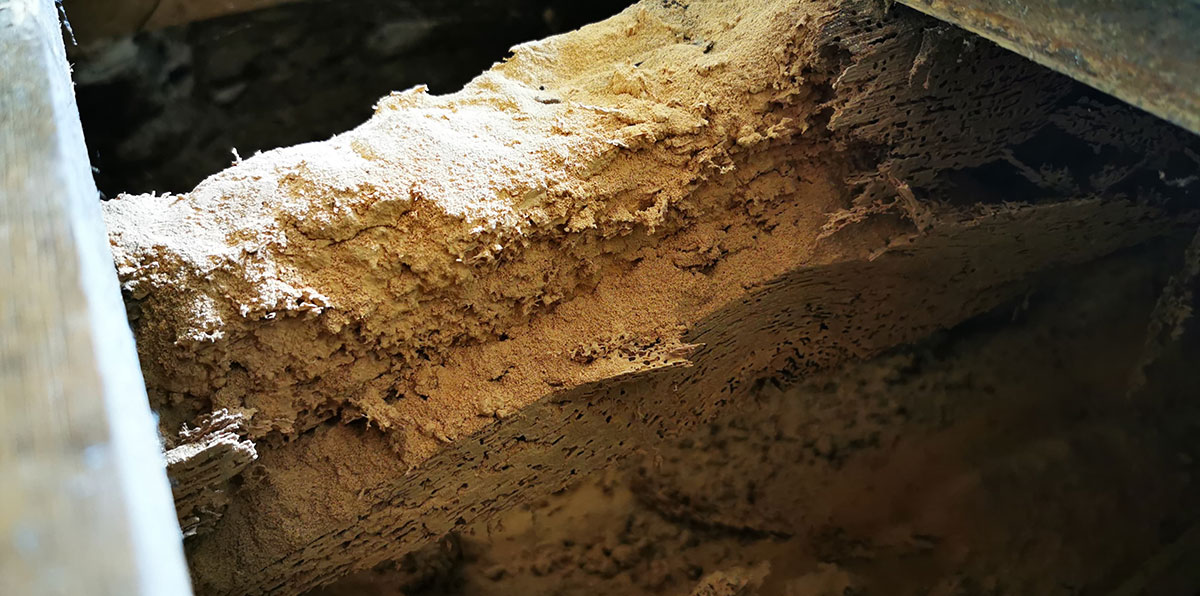Woodworm
Woodworm are larvae of wood-boring beetles, of which there are several species. Typically the adult beetles lay eggs on or just under the surface of a wooden item. The resulting grubs then feed on the wooden item causing both structural and cosmetic damage. They then pupate and hatch as beetles that then breed, lay eggs and repeat the process, causing further damage.
Woodworm & Moisture
As these beetles are accustomed to consuming decaying wood in forests, most grubs will prefer wooden items that contain a higher moisture content than that of typical household items.
A building with a woodworm problem in its structure or furniture may also have a problem with excess moisture. The issue could be the result of a lack of ventilation in a loft space, cellar, underfloor or other enclosed space within an otherwise dry building.
Types of Woodworm
Common Furniture Beetle (Anobium punctatum)
This beetle is often found in homes and buildings across the country and feeds on hardwoods and softwoods. In warm weather it flies, causing an infestation to spread to other timbers in the property.
Deathwatch Beetle (Xestobium rufovillosum)
A well-known species of woodworm, it makes a ticking noise when mating, which is where it gets the name. Numerous building structures have been destroyed by this type of wood-boring beetle over the decades and it can be difficult to eradicate.
House Longhorn Beetle (Hylotrupes bajulus)
This beetle is a bigger problem in the South East than the rest of the UK and is attracted to softwoods. Roof timbers are an ideal nesting ground for this beetle. In warm weather it flies, causing an infestation to spread to neighbouring properties.
Beetle Life Cycle
Common furniture beetles and deathwatch beetles do not feed, they just reproduce. The female lays eggs in cracks in wood or inside old exit holes, if available. The eggs hatch after some three to four weeks each producing a 1 millimetre long white, C-shaped larva.
For three to four years the larvae bore semi-randomly through timber, following and eating the starchy part of the wood grain, and grow up to 7mm long. They come nearer to the wood surface when ready to pupate. They excavate small spaces just under the wood surface and take up to eight weeks to pupate.
The adults then break through the surface making a 1mm to 3mm exit hole and spilling dust and then fly towards sunlight, normally to the nearest window, the first visible signs of an infestation.

Signs of Woodworm Infestation
Signs of woodworm usually consist of holes in the wooden timber, which is normally the common furniture beetle (Anobium punctatum) with live infestations showing powder (faeces), known as frass around the holes. The size of the holes varies, but are typically 1mm to 2mm in diameter for the most common household species, although they can be much larger in the case of deathwatch beetles (Xestobium rufovillosum). Adult beetles that emerge from wood may also be found in the summer months.